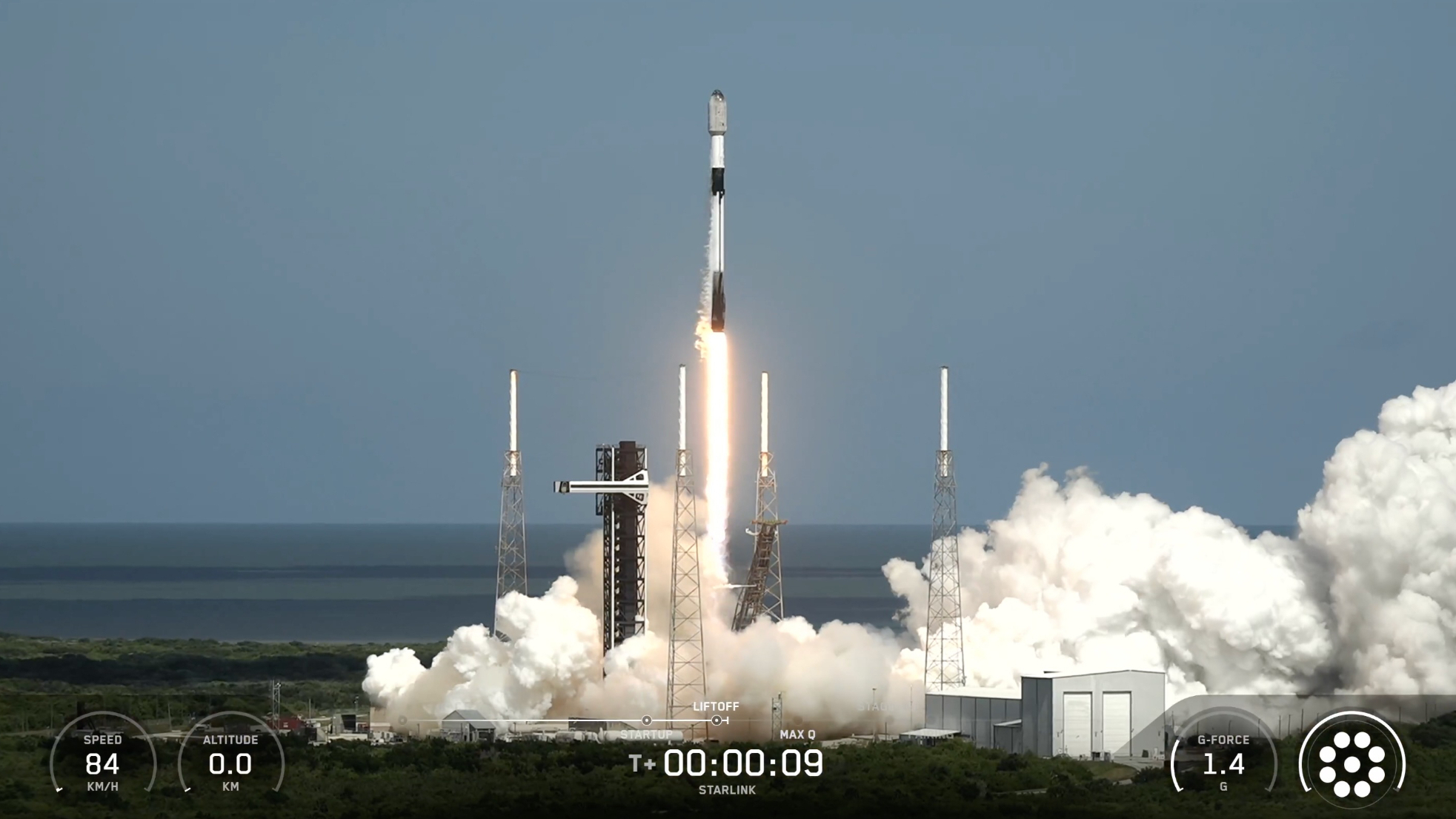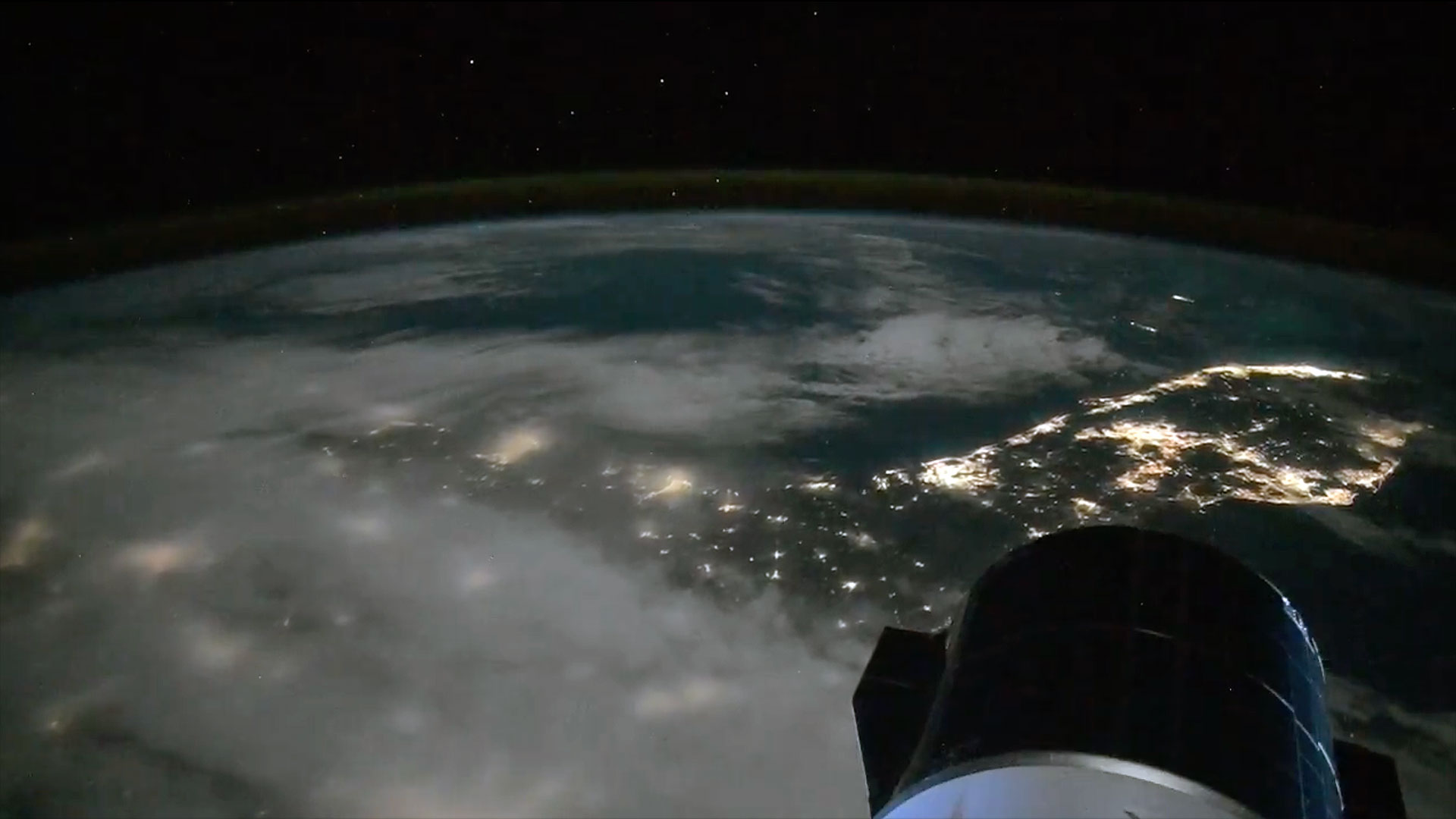SpaceX launches Starlink satellites to orbit on Falcon 9 rocket's record-breaking 31st flight (video)
SpaceX extended its rocket-reuse record again today (Oct. 19).
SpaceX notched a big milestone on a Falcon 9 rocket launch today (Oct. 19).
A Falcon 9 carrying 28 of SpaceX's Starlink broadband satellites lifted off from Florida's Cape Canaveral Space Force Station today at 1:39 p.m. EDT (1639 GMT).
It was the record-breaking 31st mission for this Falcon 9's first stage, a booster designated 1067.

Booster 1067 came back to Earth about 8.5 minutes after liftoff as planned today, wrapping up its 31st flight with a pinpoint landing in the Atlantic Ocean on the SpaceX drone ship "A Shortfall of Gravitas."
Such extensive rocket reuse is a core part of SpaceX's plan to lower the cost of spaceflight and increase its efficiency.
CRS-22 | Crew-3 | Turksat 5B | Crew-4 | CRS-25 | Eutelsat HOTBIRD 13G | O3B mPOWER | PSN SATRIA | Telkomsat Marah Putih 2 | Galileo L13 | Koreasat-6A | 19 Starlink missions
That already-successful strategy could take a big leap forward soon; the company is developing a giant, fully reusable rocket called Starship, which is designed to help humanity settle Mars. (The Falcon 9 and its close cousin the Falcon Heavy are only partially reusable; their upper stages are expendable.)
The Falcon 9's upper stage, meanwhile, hauled the 28 Starlink satellites to low Earth orbit today, deploying them as planned about 64 minutes after launch.
Breaking space news, the latest updates on rocket launches, skywatching events and more!
Editor's note: This story was updated at 1:49 p.m. EDT on Oct. 19 with news of successful launch and rocket landing. It was updated again at 5 p.m. ET with news of satellite deploy, and to correct an earlier version that claimed that this flight lofted the 10,000th Starlink satellite to space. That milestone actually came on SpaceX's second Starlink launch of the day, which launched from California.

Michael Wall is a Senior Space Writer with Space.com and joined the team in 2010. He primarily covers exoplanets, spaceflight and military space, but has been known to dabble in the space art beat. His book about the search for alien life, "Out There," was published on Nov. 13, 2018. Before becoming a science writer, Michael worked as a herpetologist and wildlife biologist. He has a Ph.D. in evolutionary biology from the University of Sydney, Australia, a bachelor's degree from the University of Arizona, and a graduate certificate in science writing from the University of California, Santa Cruz. To find out what his latest project is, you can follow Michael on Twitter.
You must confirm your public display name before commenting
Please logout and then login again, you will then be prompted to enter your display name.
